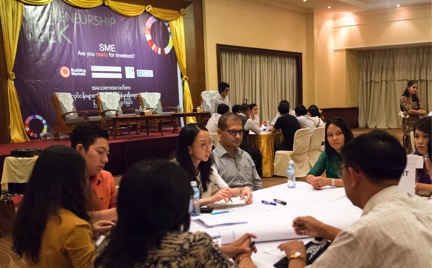Myanmar has adopted the market – oriented economic system in 1988. Appropriate measures has been undertaken, the underlying aspect in doing so are decentralizing the central control, encouraging private sector development, allowing foreign direct investment, initiating institutional changes and promoting external trade by streamlining export and import producers. According, laws, orders, rules, regulations and notifications which had prohibited or restricted the private sector from engaging in economic activities were replaced and many laws and rules were amended to be in line with the change of time and circumstances.

The Union of Myanmar Foreign Investment Law (FIL) was enacted in November 1988 and the procedures prescribed in December 1988 encouraging foreign direct investment. Myanmar has opened the doors to foreign investment to participate actively in exploiting the natural resources thereby enhancing long – term mutually beneficial cooperation.
Myanmar has been implementing the National Development Plan with the aim to accelerate growth, achieve equitable and balanced development and to reduce socio – economic development gap between rural and urban areas of the country. A country’s economic development depends on micro economic stability. The country would see an increase in micro economic indicator, which generates more job opportunities, more exports and increase in balance of payment (BOP) ratio.
Also Read : Shwe Property and Property Guru hosts Digital Marketing panel discussion in Myanmar
Myanmar is home to 70% of rural population and 30% of urban population, and most of the rural people are in poverty. The government is undertaking eight – point task of development and poverty alleviation for providing assistance for the rural people. According to the calculation of UNDP and UNICEF, poverty rate of the nation declined to 26% in 2010, compared with 32% in 2005. At present, those eight tasks of rural development and poverty alleviation campaign are being implemented with the aim of reducing the poverty rate to 16% in 2015.
Government is making great strides in carrying out necessary reforms with might and main for participating democracy correctly in all sectors and in every corner of the country. Regarding lifting of most economic sanctions against Myanmar, foreign investors are packing their suitcase for visit the Southeast Asia country in pursuit of business prospect. Recent changes in Myanmar can draw the attentions of foreign investors. Based on the foreign investments, domestic companies’ productivity would increase, thereby spurring the country’s economic growth. But, investments of foreign companies alone cannot increases productivity not including the domestic companies. All countries in the world have agreed the Foreign Direct Investment can push the economic development.
Current economic situations in Myanmar (Burma)
As Myanmar is still an agricultural country, the contribution to GDP by agriculture, livestock, fisheries and forestry accounted to 41.2%, while the processing and manufacturing sector accounted for about 21.7% and service sector account 37.1% at 2011-2012. For the Industry sector, principal manufacturing activities are related to the processing of agricultural resources with food and beverage production generating more than half of the gross manufacturing output followed by construction material industries contribution 7.58% and Garment industries contribution 4.83% of the total. Actually, Myanmar’s economic structure is early stages of industrialization.The following table shows the number of registered enterprises in each state and region of Myanmar according to the SMEs definition based on 2011 Private Industry Law.
Number of Registered Enterprises in States and Regions up to February, 2015

